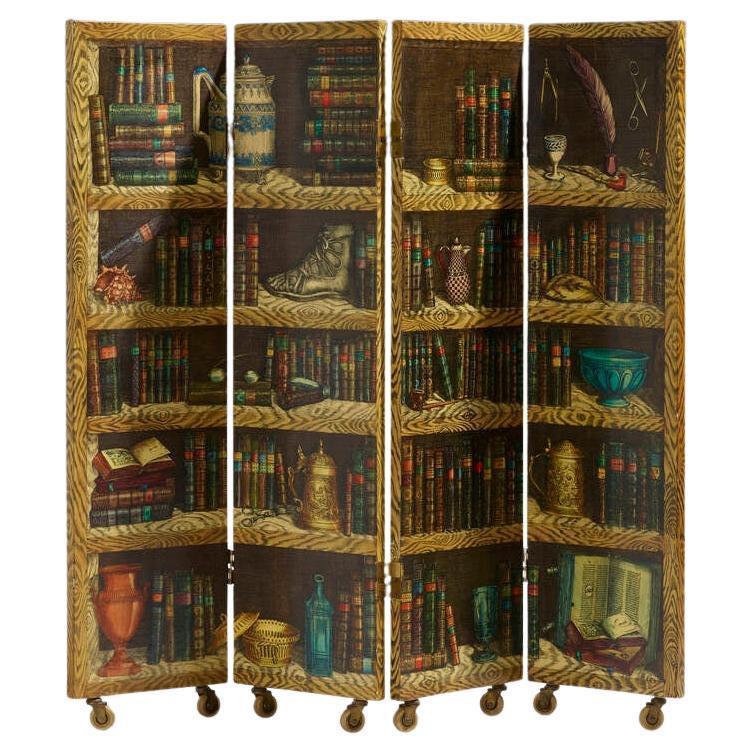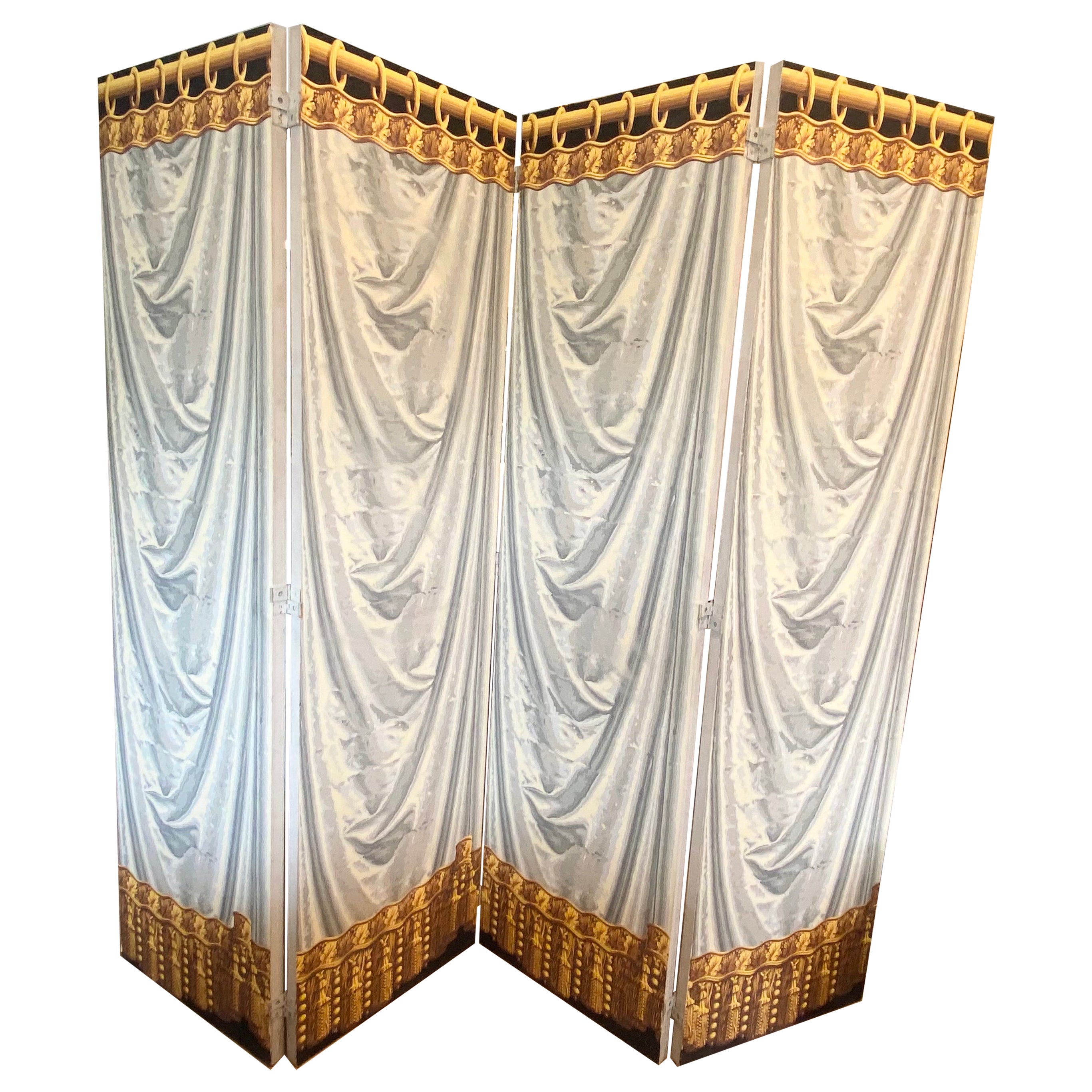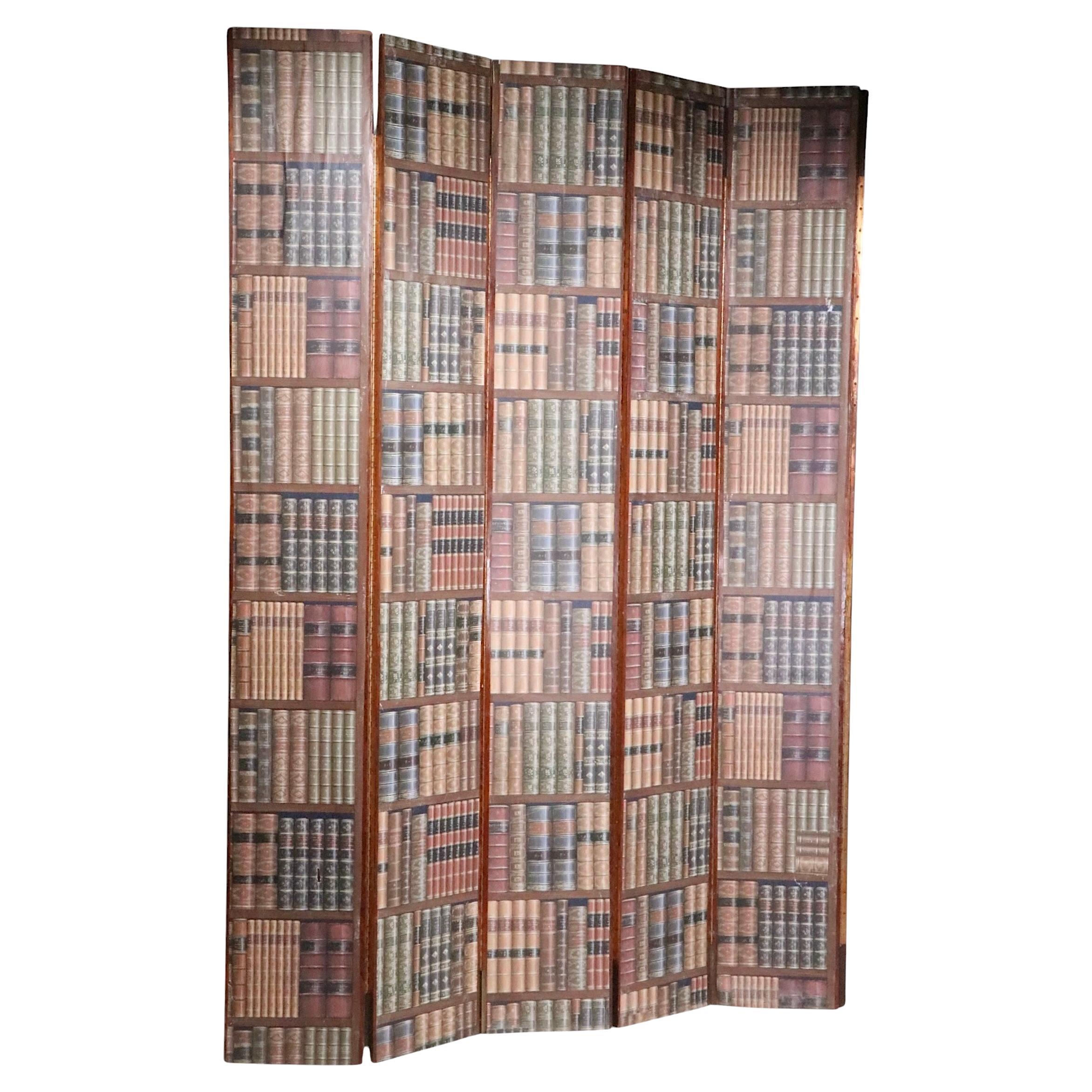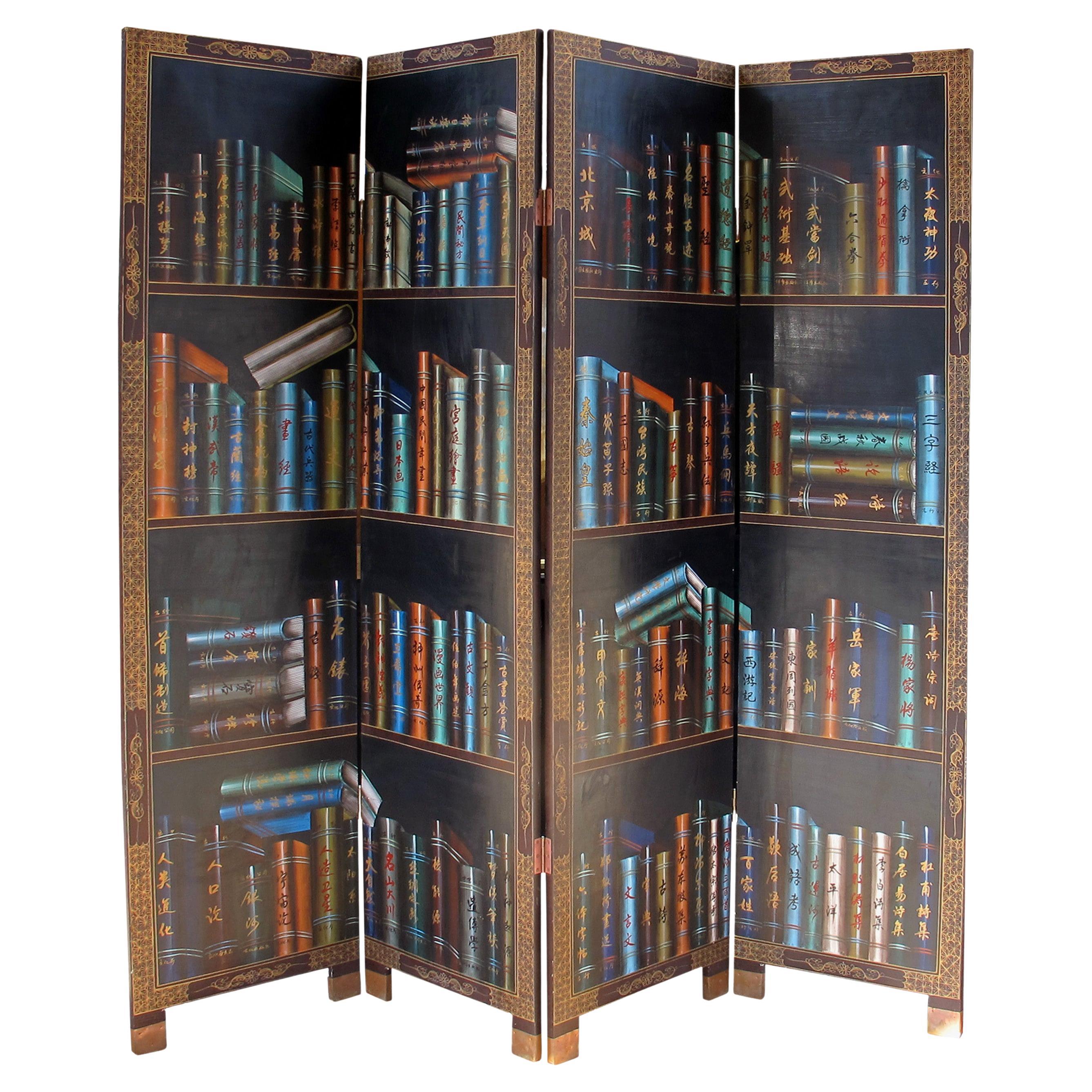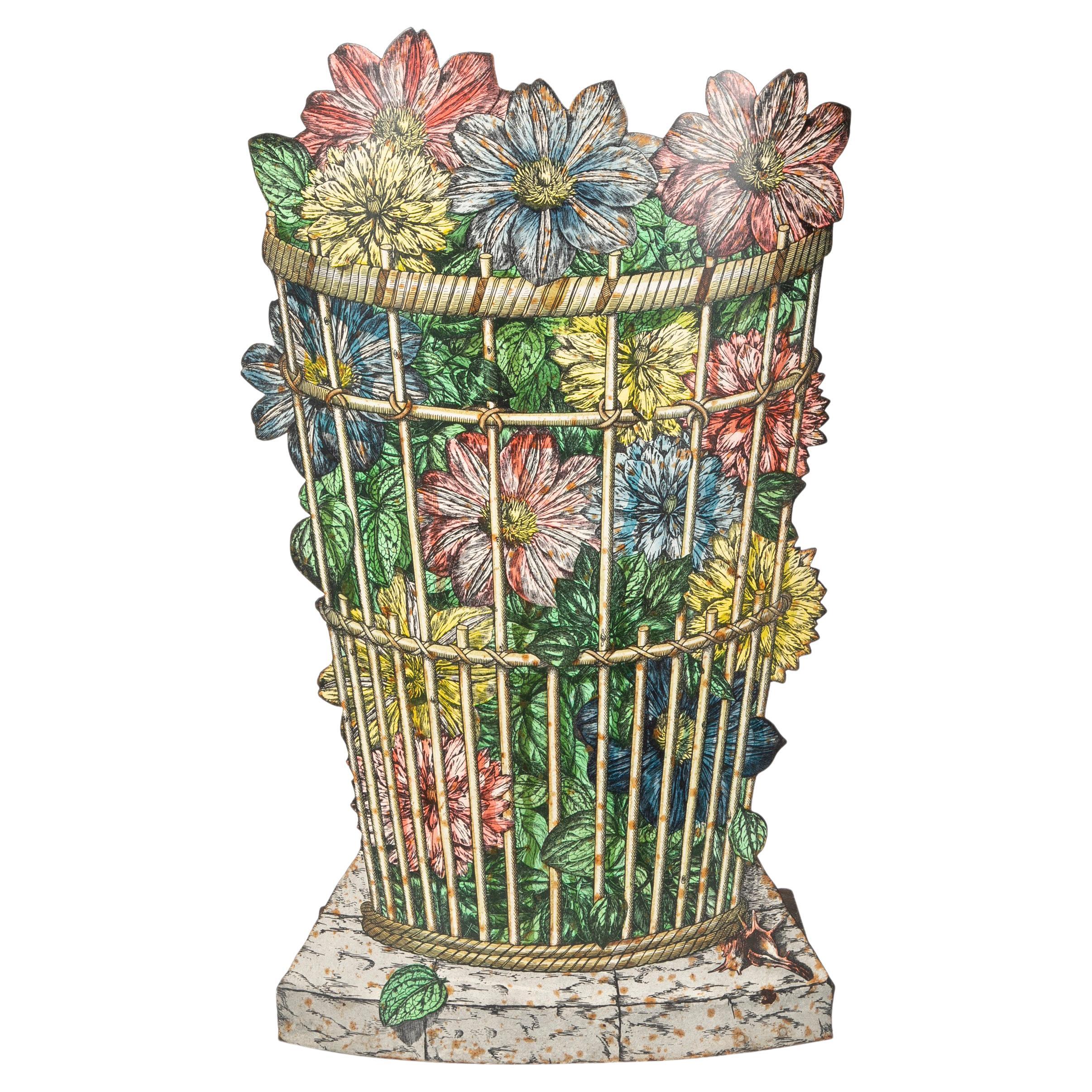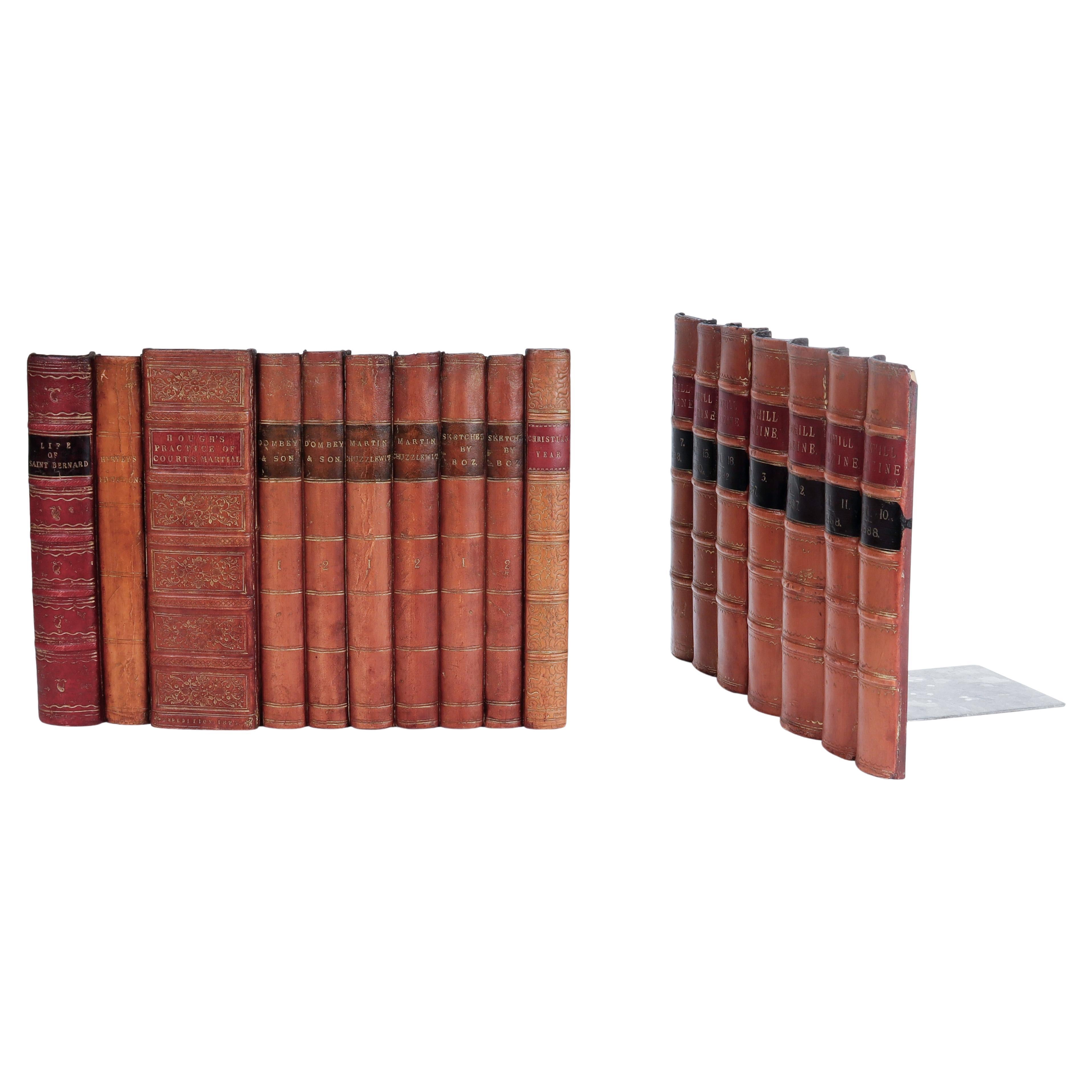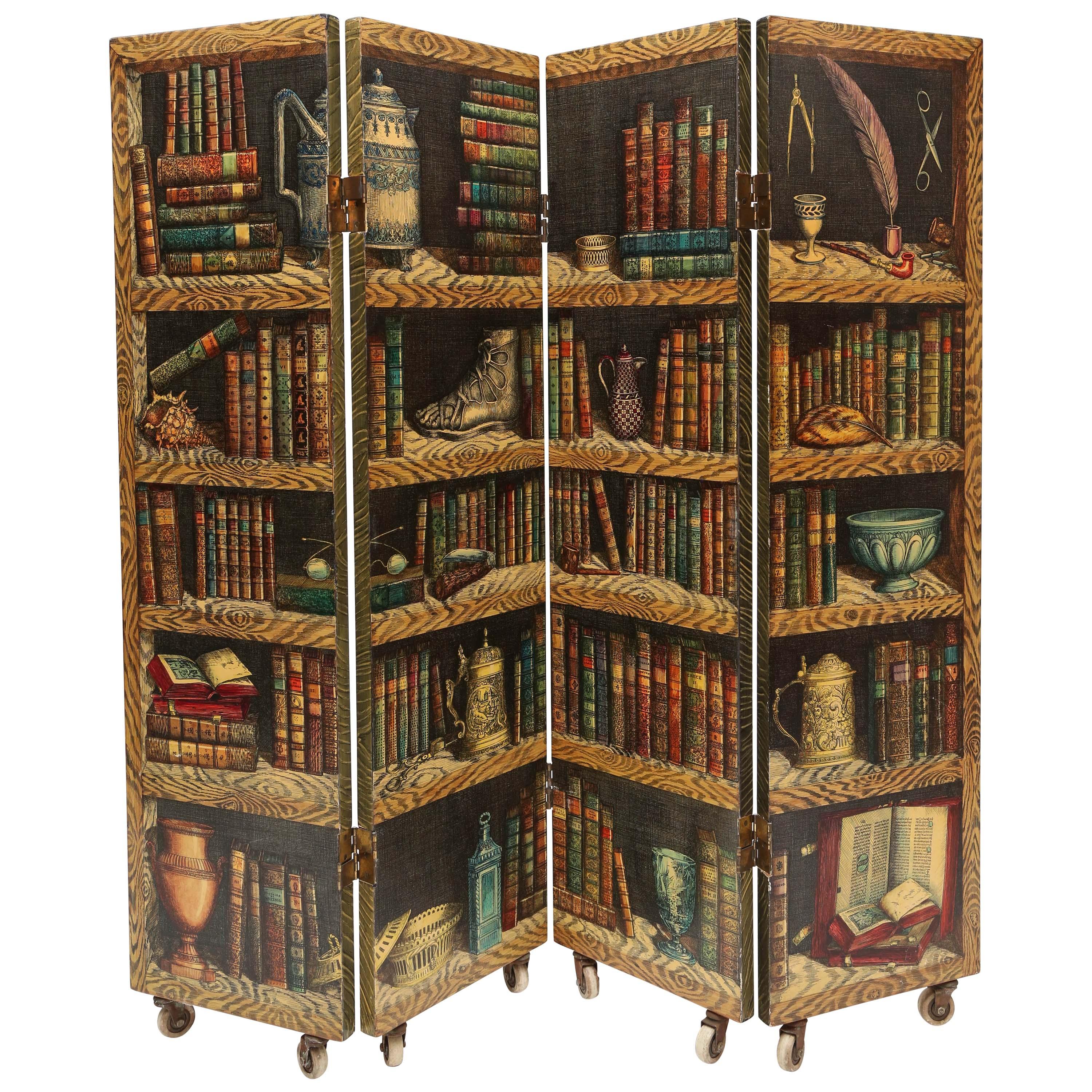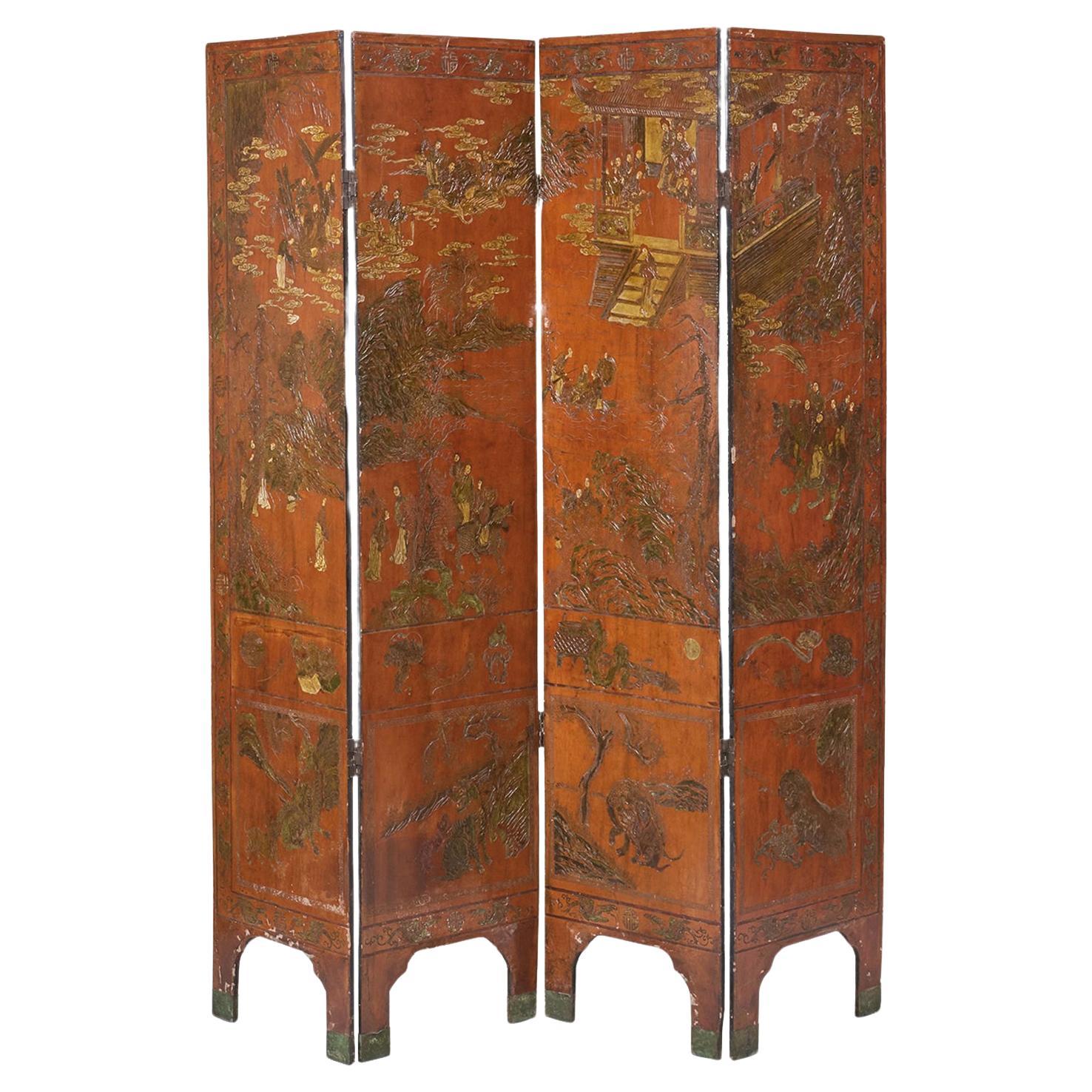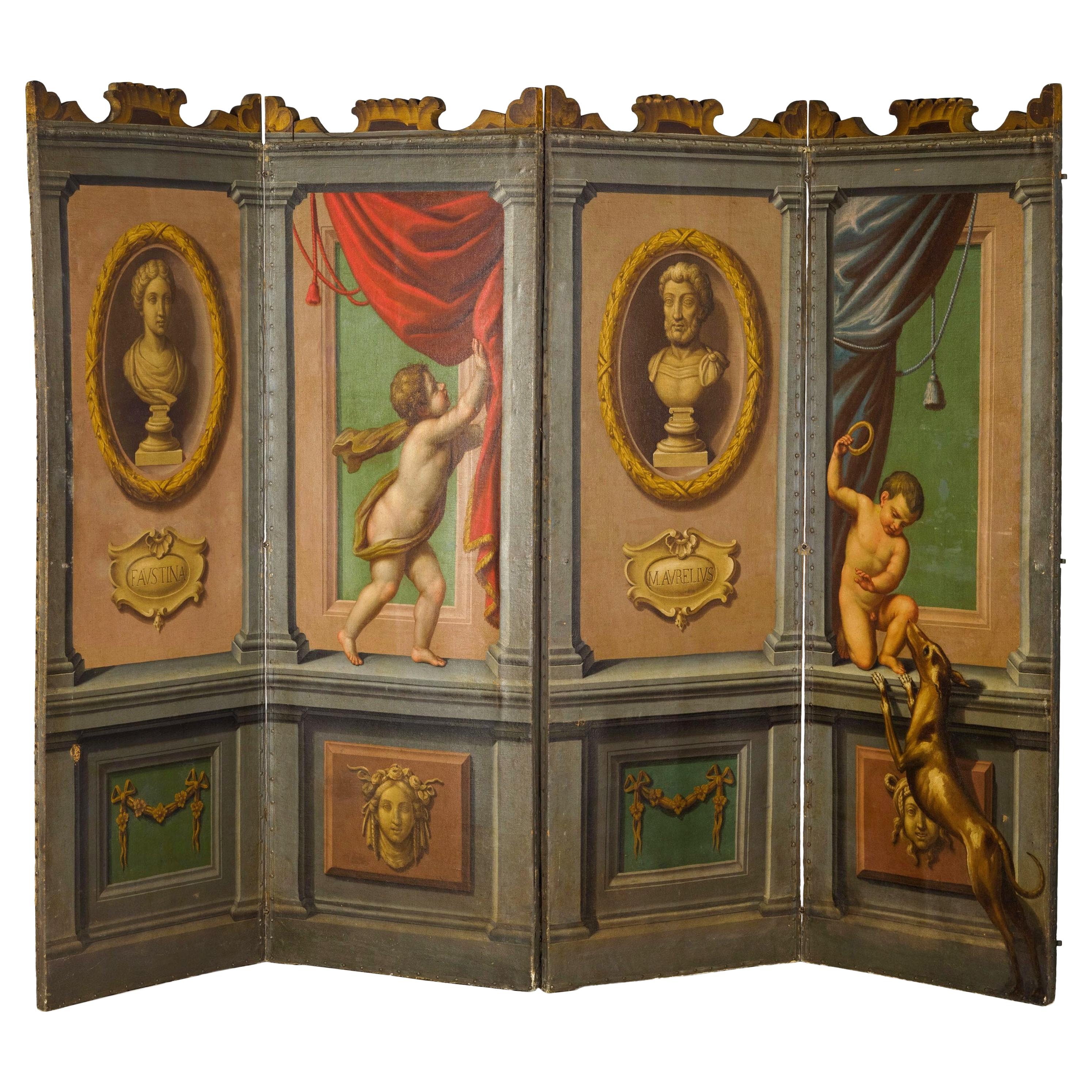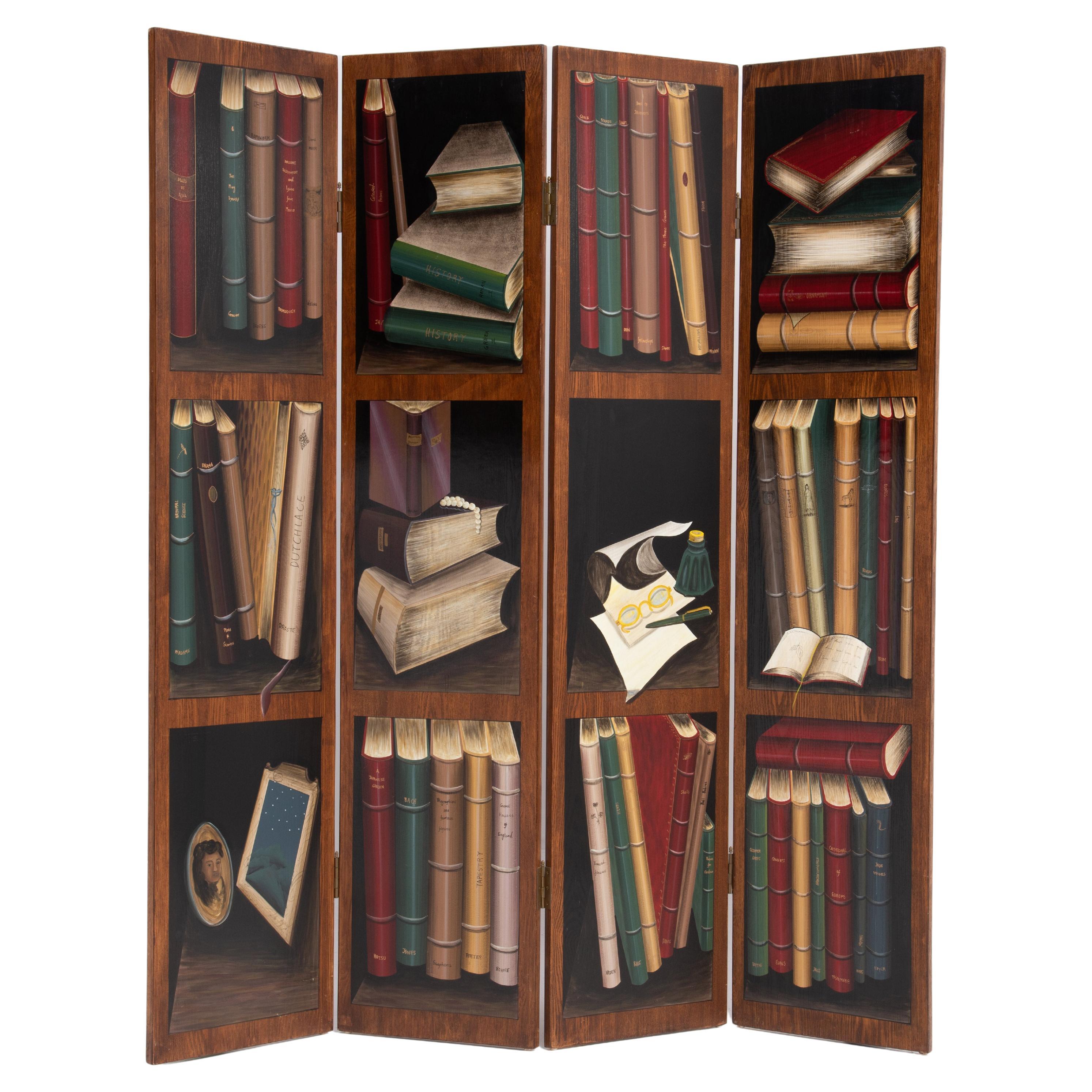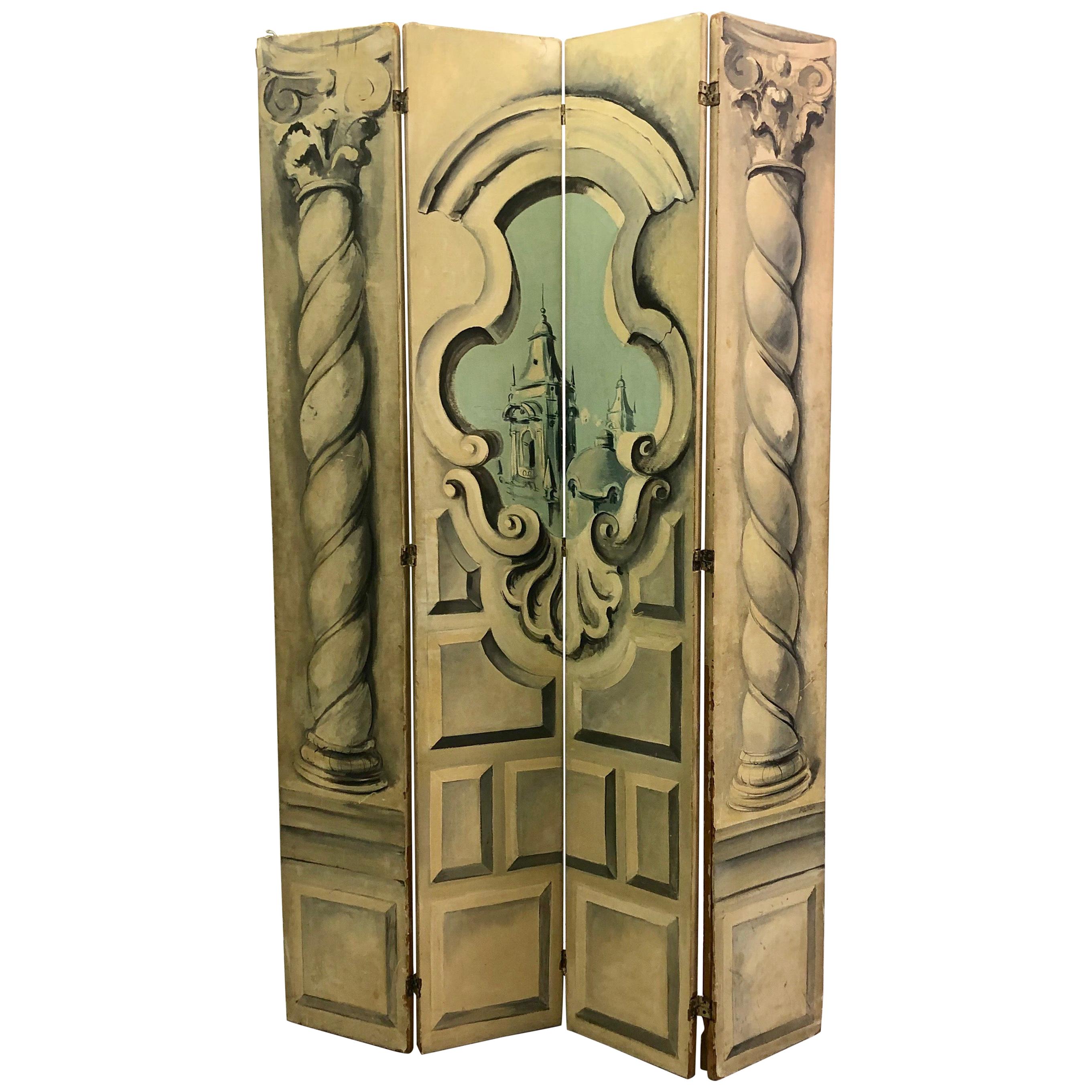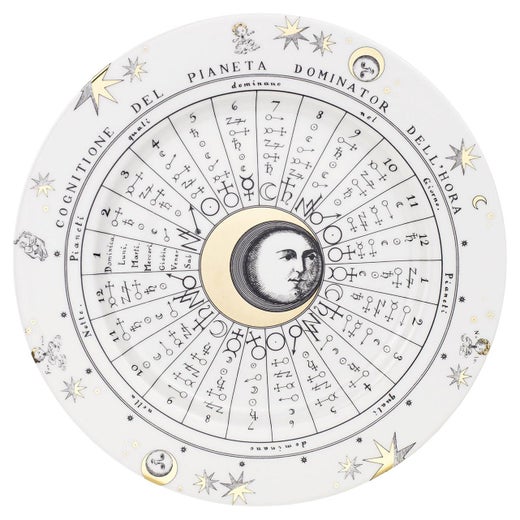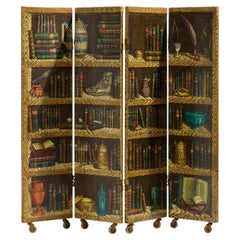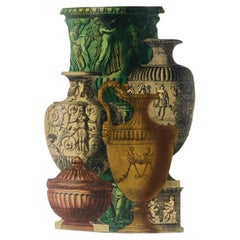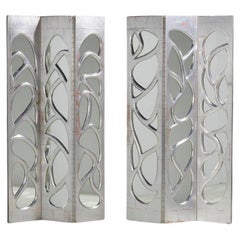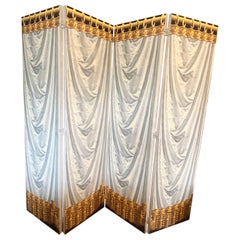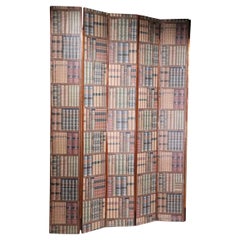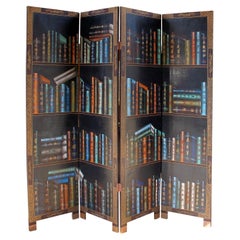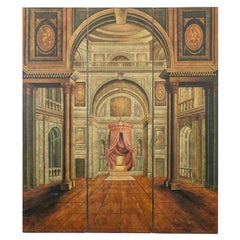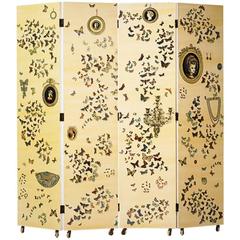
Rare Trompe l’oeil “Farfalle” Four-Panel Folding Screen by Piero Fornasetti
View Similar Items
Rare Trompe l’oeil “Farfalle” Four-Panel Folding Screen by Piero Fornasetti
About the Item
- Creator:Fornasetti (Artist)
- Dimensions:Height: 81 in (205.74 cm)Width: 78 in (198.12 cm)Depth: 1.25 in (3.18 cm)
- Style:Mid-Century Modern (Of the Period)
- Place of Origin:
- Period:
- Date of Manufacture:circa 1960
- Condition:
- Seller Location:Montreal, CA
- Reference Number:1stDibs: LU87514950323
Fornasetti
The Italian artist, illustrator and furniture maker Piero Fornasetti was one of the wittiest and most imaginative design talents of the 20th century. He crafted an inimitable decorative style from a personal vocabulary of images that included birds, butterflies, hot-air balloons, architecture and — most frequently, and in some 500 variations — an enigmatic woman’s face based on that of the 19th-century opera singer Lina Cavalieri. Fornasetti used transfer prints of these images, rendered in the style of engravings, to decorate an endless variety of furnishings and housewares that ranged from chairs, tables and desks to dinner plates, lamps and umbrella stands. His work is archly clever, often surreal and always fun.
Fornasetti was born in Milan, the son of an accountant, and he lived his entire life in the city. He showed artistic talent as a child and enrolled at Milan’s Brera Academy of Fine Art in 1930, but was expelled after two years for consistently failing to follow his professors’ orders. A group of his hand-painted silk scarves, displayed in the 1933 Triennale di Milano, caught the eye of the architect and designer Gio Ponti, who, in the 1940s, became Fornasetti’s collaborator and patron. Beginning in the early 1950s, they created a striking a series of desks, bureaus and secretaries that pair Ponti’s signature angular forms with Fornasetti’s decorative motifs — lighthearted arrangements of flowers and birds on some pieces, austere architectural imagery on others. The two worked together on numerous commissions for interiors, though their greatest project has been lost: the first-class lounges and restaurants of the luxury ocean liner Andrea Doria, which sank in 1956.
Fornasetti furnishings occupy an unusual and compelling niche in the decorative arts: they are odd yet pack a serious punch. They act, essentially, as functional sculpture. A large Fornasetti piece such as a cabinet or a desk can change the character of an entire room; his smaller works have the aesthetic power of a vase of flowers, providing a bright and alluring decorative note. The chimerical, fish-nor-fowl nature of Fornasetti’s work may be its greatest strength. It stands on its own. Bringing the Fornasetti look into the future is Barnaba Fornasetti, who took the reins of the company after his father's death.
More From This Seller
View AllVintage 1950s Italian Screens and Room Dividers
Wood
Vintage 1960s Italian Umbrella Stands
Steel
Vintage 1960s American Screens and Room Dividers
Wood
Vintage 1930s French Art Deco Screens and Room Dividers
Sycamore
Vintage 1970s French Screens and Room Dividers
Teak
Vintage 1950s Italian Umbrella Stands
Metal
You May Also Like
Late 20th Century Screens and Room Dividers
Paper
Mid-20th Century American Bohemian Screens and Room Dividers
Plywood, Paper
Vintage 1950s Chinese Chinese Export Screens and Room Dividers
Wood
Late 20th Century Chinese Screens and Room Dividers
Canvas, Wood
Mid-20th Century Italian Mid-Century Modern Umbrella Stands
Metal
Late 20th Century Bookends
Leather
Recently Viewed
View AllRead More
Barnaba Fornasetti’s Hallucinatory House Has His Father’s Spirit
Behind a nondescript facade in northeastern Milan is the magical residence of Barnaba Fornasetti. It's a shrine to the style developed by his design-legend father, which still defies categorization.
Carlo Bugatti’s 1902 Chair Is a Masterful Cultural Mash-Up
The Italian maker’s unmistakable, highly eclectic style drew on influences from around the globe.
